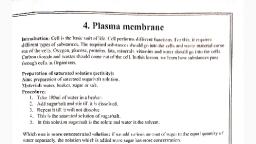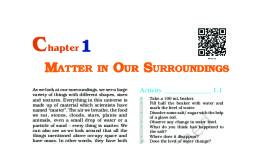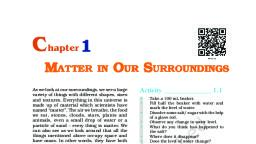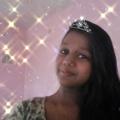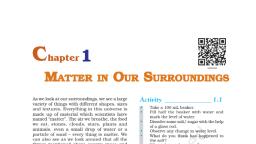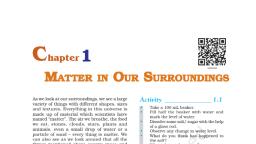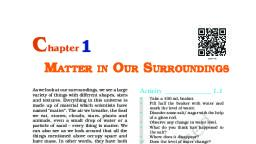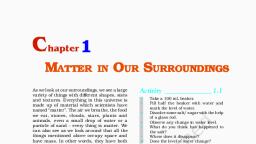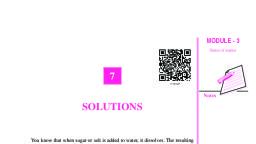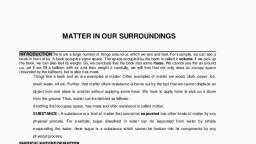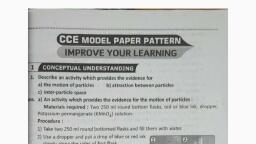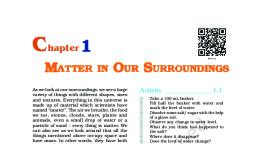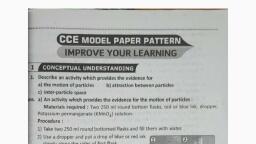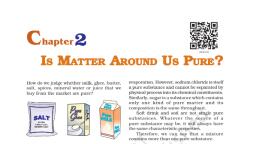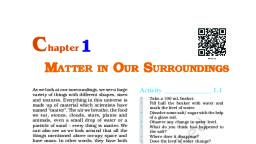Page 1 :
Notes: Enlightened tutorials, , Chapter 1 Matter in our Surroundings, , 1. Define Matter., Answer: Anything that has mass and volume & occupies space is called matter., 2. Name the five basic elements based on which the Early Indian Philosophers classified matter., Answer: The basic 5 elements are termed as “Panch Tatva’” i.e air, earth, sky, water and fire., 3. On what basis the modern scientists classified matter., Answer: The modern scientists classified matter based on their physical and chemical nature., 4. What is meant by physical nature of matter?, Answer: Physical nature of matter means:, a) Matter is made up of particles, b) Particles of matter are very small in size., 5. Describe an activity to show that matter is made up of particles., Answer: An activity to show that matter is made up of particles is explained below, Materials required: A glass beaker (100 ml), a glass rod, sugar and some water., , Procedure: Let us take the glass beaker and fill it to half with water, and then mark the level, of the, , water. Then with the help of the glass rod some sugar is dissolved in the water., , Observation: We observe that sugar gets dissolved in the water and disappears. However, no, change in the level of the water is observed., , Conclusion: Thus we can conclude that the tiny sugar particles break off from each solid, sugar granules. These tiny particles of sugar get into the spaces between the particles of water., , Hence, we finally conclude that matter is made up particles., 6. Describe an activity to show that particles of matter are very small in size., Answer: An activity to show that particles of matter are very small in size is explained below, , Materials required: glass beaker (100 ml), few crystals of potassium permanganate and, some water, , Procedure:, , 1) few crystals of potassium permanganate are dissolved in the 100ml beaker of water, , Notes by Sakil Sir
Page 2 :
2) 10 ml of this solution is taken and added in another beaker containing 90 ml of clear water., , 3) 10 ml of the above solution is taken and added in another beaker containing 90 ml of clear, water., , 4) This process of dilution is repeated., , Observation: Initially the colour of the solution is purple (dark pink) which gradually fades at, each, , dilution., , Conclusion: When potassium permanganate dissolves in water, its particles spread, throughout water imparting dark pink colour. When this solution is diluted, the articles further, spreads. Thus few crystals of potassium permanganate contain millions of particles which keep on, spreading and imparting colour to more and more water on dilution., , Hence, we finally conclude that particles of matter are very small in size., 7. What are the characteristics of particles of matter?, Answer: The characteristics of particles of matter are:, , a) particles of matter have space between them., , b) particles of matter move continuously., , c) particles of matter attract each other., , Notes by Sakil Sir











